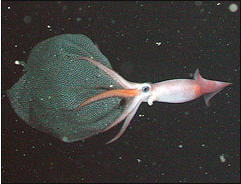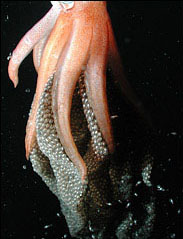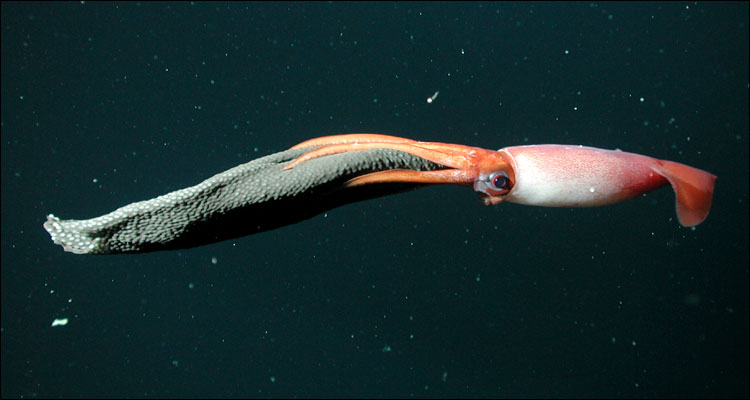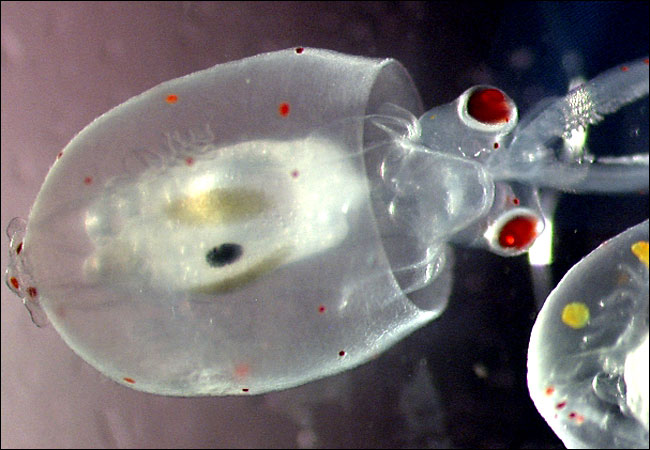

New photos show squid mothers carrying egg bundles for months, while hatchlings gestate, contradicting the scientific belief that, unlike octopuses, squids merely cast their new eggs to the ecosystem.
BBC online report 12-15-05
Scientists have captured the first images of a mother squid caring for its young, carrying eggs in a giant sac. Using a robot submersible, researchers saw the tiny squid Gonatus onyx carrying its eggs in a sac almost the same size as its body. Writing in the journal Nature, they say this helps the baby squid to survive after they hatch. But care comes at a price, as months of holding the eggs in its arms weakens the adult and may make it easy prey. Squid generally place fertilised eggs on the ocean floor and leave the young to fend for themselves.
 |
Gonatus onyx is one of the most common squid in the Pacific and Atlantic Oceans. It spends most of its life in shallow waters, but will dive to 2-3,000m when spawning. Scientists had presumed that like other squid, it laid its eggs on the sea floor, too. Now, a remotely operated submarine of the Monterey Bay Aquarium Research Institute (MBARI) in California has shown a far more spectacular behaviour. Reporting their observations in the journal Nature, Brad Seibel and colleagues write: "We observed five squid, each holding an egg mass in its arms, at depths between 1,539 and 2,522m." |  |
||
| Mother and egg mass | releasing hatchlings |
Using tools on the submersible, the team was able to capture adults, eggs and hatchlings for analysis. Gonatus onyx is only about 20cm long and in comparison to its size, the egg sac is enormous, almost doubling the animal's length. The eggs are held between two thin membranes, open at both ends.
 |
||
| A mother and egg mass |
|
|
The researchers observed the mothers flushing water through their stock of 2,000-3,000 eggs, presumably to bring them aerated water. Each adult may keep the egg sac for six to nine months before releasing its babies.
Brad Seibel, who is currently at the University of Rhode Island, believes this is the first time brooding behaviour has been documented in a squid, prompting the question: "Why do they do it?"
As with all animals, reproduction is a trade-off between different issues surrounding survival and energy. Laying eggs on the ocean floor is quick and costs little in terms of energy; the penalty is a lowered chance of survival for the young. Carrying the eggs around is far more expensive in energy terms, and does seem to affect the mothers severely. Researchers found evidence that their muscles lose strength over time, perhaps meaning they are more vulnerable to predators. However, it does increase the chances for their eggs to mature, develop and swim off to form a new generation.
 |
||
| A hatchling looks around for the first time. |